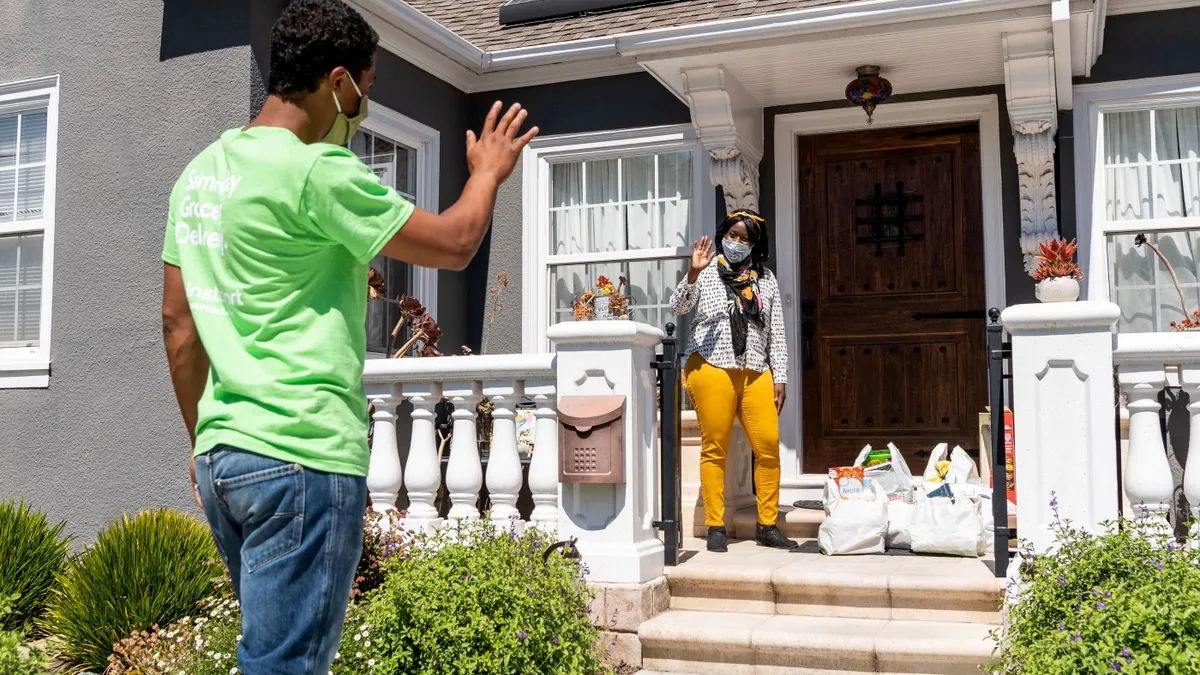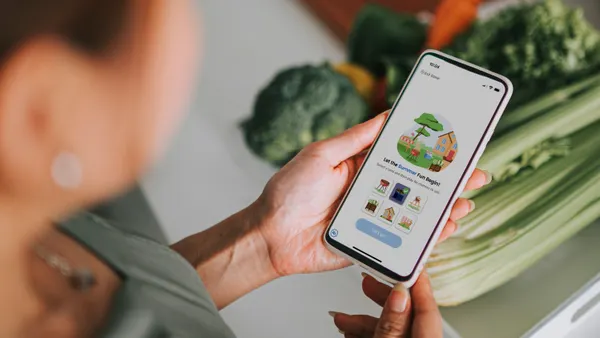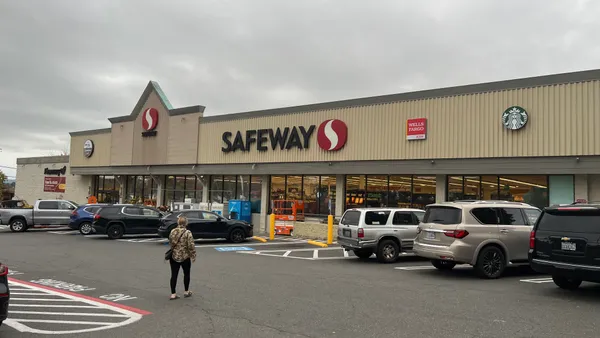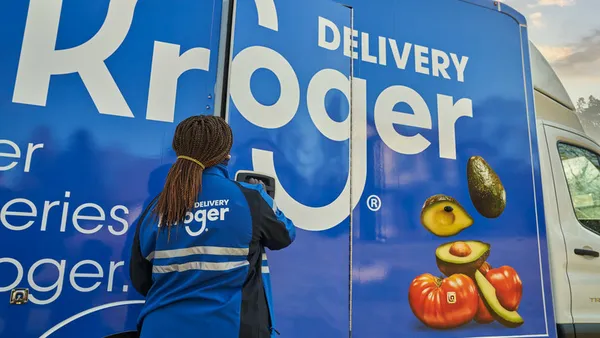Dive Brief:
- Shopper loyalty to Instacart has declined over the past two years and loyalty to grocers has increased, according to a recent survey conducted by investment firm Barclays.
- In a survey of more than 1,000 consumers, just 7% said they were loyal to Instacart, down from 16% in Barclays’ influential 2019 survey. The percentage of respondents who said they are loyal to their favorite grocers bumped up to 29% from 22% in 2019.
- When the pandemic hit, Instacart was the go-to solution for many grocers scrambling to offer online shopping, but it's facing increasing challenges to maintaining its e-commerce reign. "In 2021, our survey shows cracks in the armor given much greater competition in the space," Barclays noted in the report.
Dive Insight:
Instacart has welcomed droves of new customers during the pandemic. But loyalty to the company has diminished as competition from the likes of DoorDash and Uber has increased and as grocers have gotten a status bump during the global health crisis, Barclays' report suggests.
Like the 2019 survey results, the most recent findings suggest shoppers are split on whether they are more loyal to Instacart or to the retailer. But the survey this year found an uptick in customers who said they would look for a different home delivery option. When asked if their preferred retailer was no longer available with Instacart, 38% of shoppers said they would go to the same grocer in-store and 37% would use a different retailer on Instacart — down 7 and 6 percentage points, respectively, from 2019. Twenty-three percent said they would find a different grocery home delivery option, up 12 percentage points over the previous survey.
While more respondents said Instacart is their preferred shopping method, Barclays said consumer engagement with grocers has grown during the pandemic. In addition to the increase in the percentage of consumers who said they're loyal to their favorite grocers, 59% of respondents — up from 32% in 2019 — said using Instacart does not impact their tendency to shop in-store with retailers.
When asked why they reordered groceries on Instacart, respondents were consistent with responses from 2019, ranking convenience, saving time and ease of use as top reasons. But the survey showed shoppers are significantly less impressed with the product quality and prices they get. While nearly a quarter said they liked the quality of fresh products liked meat and produce (26%) and competitive prices (23%) in 2019, only 11% and 8%, respectively, said the same this year.
In its 2019 report, Barclays referred to retailers' reliance on the company's services and marketplace as an "addiction," and said that retailers were losing valuable consumer loyalty and data as a result. Now, with greater competition, including in-house services from chains like Kroger and Ahold Delhaize, the firm said the industry is entering an Instacart "hangover" phase that could ultimately benefit grocers.
“In our view, the increased competition from new entrants will arbitrage fees lower for third-party ecommerce providers – potentially benefiting the e-commerce cost equation for retailers using third party, gig economy solutions for [e-commerce] fulfillment,” the report said.
In comparison to other grocery services from Amazon, Instacart, Kroger, Shipt and Walmart, Instacart scored well on an absolute basis, but ranked last in product prices and overall prices. Walmart achieved the highest score in these two areas. Meanwhile, Amazon scored the highest ranking in the other five areas: availability of products needed, product quality, ease of shopping, in-stock availability and saving time/making life easier. Shipt ranked above Instacart in all of the categories.
When examining net intention to use a service again in the next 12 months, Amazon (91%) and Kroger Click and Collect (89%) scored the highest, while Shipt had the lowest (79%) score.
Instacart has undergone several changes in the two years since Barclays’ first examination of the e-commerce service. The company has branched out beyond grocery to partner with pet supply chains, home goods retailers and more, and now counts more than 600 retailer partners. The company has also launched faster delivery service, acquired a catering software company and begun offering automated fulfillment as a service.
Competitors have felt more emboldened to call out Instacart, focusing in particular on grocers' desires to control more customer data, as Instacart faces labor woes and fends off concerns within the grocery industry that it will turn into a retailer itself.
Instacart CEO Fidji Simo said in a recent interview with The Associated Press that the company’s bevvy of top retailers is a key competitive advantage: “[Customers] care enormously about selection and they care enormously about their loyalty to particular retailers. And so our positioning is very, very different from that of our competitors,” she told the outlet.
Instacart expects to see double-digit transaction growth this year, and going forward, sees its ad business as an important part of its customer experience and as a way to lower costs, per the AP interview. “[It] allows us to make the service cheaper for consumers and charge grocers less. And I fundamentally believe that if we want 30% of people to shop online, we are going to have to make online grocery delivery cheaper overall,” Simo said.












